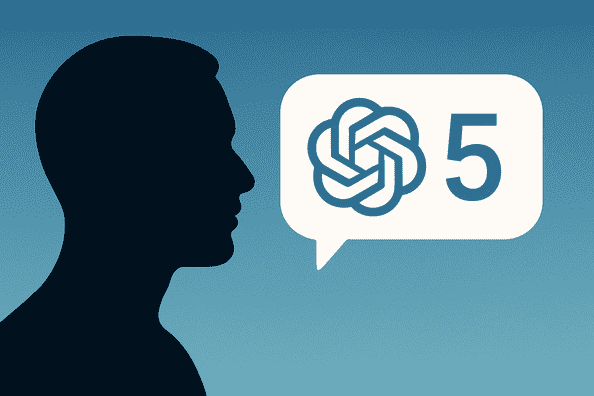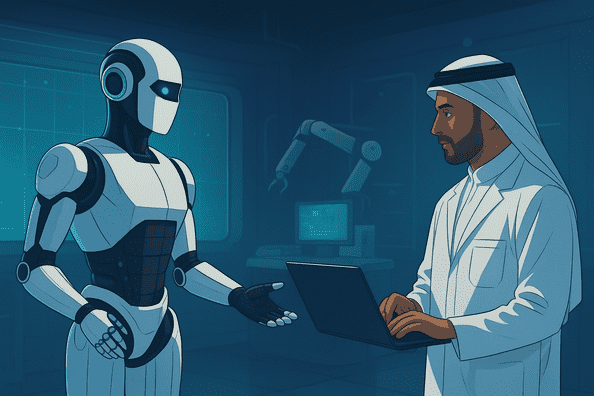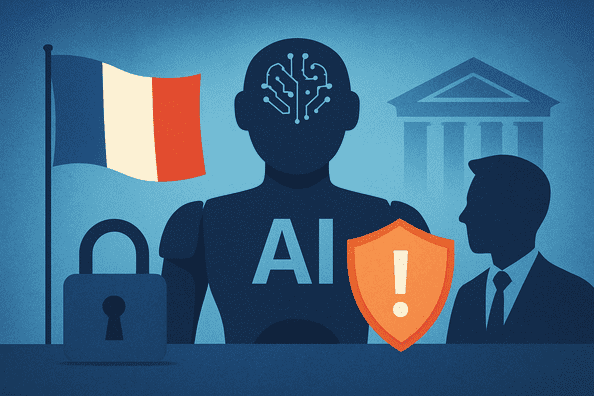The artificial intelligence world is buzzing with unprecedented excitement as OpenAI prepares to launch what could be the most significant AI breakthrough yet: ChatGPT-5. Expected to arrive in August 2025, this next-generation model promises to fundamentally transform how we interact with artificial intelligence, moving beyond simple question-and-answer exchanges to truly autonomous, intelligent assistance. The anticipation has reached fever pitch, with industry experts calling it a paradigm shift that could bring us closer to artificial general intelligence (AGI) than ever before.
The Countdown to a Revolutionary Launch
Imminent Release Timeline
Multiple sources confirm that OpenAI is targeting early August 2025 for GPT-5’s public debut. The Verge reports that internal preparations are underway, with Microsoft engineers already configuring server capacity to handle the anticipated demand. This timeline represents a significant acceleration from earlier projections, suggesting OpenAI has overcome the technical hurdles that previously delayed the launch.
Sam Altman, OpenAI’s CEO, has been increasingly vocal about the model’s imminent arrival. On X (formerly Twitter), he recently posted that “we are releasing GPT-5 soon,” while during a podcast appearance with Theo Von, he demonstrated the model’s capabilities in real-time. These public confirmations mark a departure from OpenAI’s typically secretive approach to product development.
Behind the Development Drama
The journey to GPT-5 hasn’t been without obstacles. Reports indicate that OpenAI invested over $500 million in failed training runs, forcing the company to completely rethink their approach. The traditional method of simply feeding AI systems more internet data hit a fundamental limit—as former OpenAI chief scientist Ilya Sutskever noted, “We have but one internet”. This constraint pushed OpenAI to develop innovative training techniques that focus on reasoning capabilities rather than raw data consumption.
Groundbreaking Features That Set GPT-5 Apart
Unified Intelligence Architecture
Perhaps the most revolutionary aspect of GPT-5 is its unified architecture that combines the speed of OpenAI’s GPT series with the deep reasoning capabilities of their o-series models. Users will no longer need to choose between different models for different tasks—GPT-5 automatically selects whether to provide rapid responses or engage in complex, multi-step reasoning based on the query’s requirements.
This “magic unified intelligence,” as Altman describes it, eliminates the confusion of model switching that has plagued current AI systems. Whether you need quick code generation, complex mathematical problem-solving, or creative writing assistance, GPT-5 adapts seamlessly to provide the optimal approach.
Massive Context Window and Memory Enhancement
GPT-5 introduces an unprecedented context window of up to one million tokens—roughly equivalent to five full-length novels. This massive memory capacity enables the AI to:
- Analyze entire codebases without losing context
- Process lengthy documents and maintain coherence across thousands of pages
- Remember conversations and preferences across multiple sessions
- Handle complex, multi-part projects with perfect continuity
Early testers report that GPT-5’s memory capabilities feel almost human-like, remembering personal preferences, work styles, and project details across extended interactions.
Advanced Multimodal Capabilities
Building on GPT-4’s multimodal foundations, GPT-5 takes multimedia processing to the next level. The new model can seamlessly process:
- Text and natural language with enhanced nuance and context understanding
- Images and visual data with improved analysis and interpretation
- Audio input for natural voice conversations
- Video content (rumored feature) for comprehensive multimedia analysis
This multimodal integration creates a more natural, intuitive interaction experience that mirrors human communication patterns.
Autonomous Agent Capabilities
One of GPT-5’s most exciting features is its ability to function as an autonomous agent. Unlike previous models that required step-by-step guidance, GPT-5 can:
- Execute complex, multi-step digital tasks independently
- Use web tools and APIs on behalf of users
- Book appointments, fill forms, and manage digital workflows
- Integrate with business applications for seamless automation
This agent functionality represents a major leap toward AI systems that can truly act as digital assistants rather than just conversational partners.
Industry Impact and Real-World Applications
Transforming Professional Workflows
GPT-5’s enhanced capabilities are already generating excitement across multiple industries. In healthcare, the model could assist with diagnostic processes and patient communication. Legal professionals anticipate using GPT-5 for document analysis and case research. Software developers are particularly excited about the model’s advanced coding capabilities, with some reports suggesting it can complete entire projects in minutes rather than hours.
Educational Revolution
The education sector stands to benefit enormously from GPT-5’s personalized learning capabilities. The model can adapt to individual learning styles, provide customized tutoring, and create educational content tailored to specific needs. Its ability to process multiple data types simultaneously means it can explain concepts through text, diagrams, and interactive examples.
Business Process Automation
For enterprises, GPT-5 promises to revolutionize business process automation. The model can analyze business data, generate reports, manage customer communications, and integrate with existing business tools. Early enterprise users report significant productivity improvements, with some seeing 10x faster insights and 98% user preference rates over other AI tools.
The Excitement Behind the Buzz
CEO’s Candid Admission
Sam Altman’s recent comments have added fuel to the excitement surrounding GPT-5. During his podcast appearance, he admitted that the model’s performance left him feeling “useless relative to the AI”. When he presented GPT-5 with a complex question he couldn’t answer himself, the model provided a perfect response instantly, leading to what he described as a “weird feeling” about the AI’s superior capabilities.
This candid admission from OpenAI’s CEO has sparked widespread discussion about GPT-5’s potential to surpass human capabilities in various domains.
Industry Recognition and Validation
Tech industry leaders are taking notice of GPT-5’s potential impact. Microsoft, OpenAI’s key partner, has been preparing infrastructure to support the model’s launch. The anticipation extends beyond OpenAI, with competitors like Google and Anthropic accelerating their own AI development efforts in response to GPT-5’s expected capabilities.
Early benchmark results suggest GPT-5 may rank among the top competitive programmers globally, with internal versions already achieving top-50 performance and potentially reaching the #1 position by year-end.
Challenges and Concerns on the Horizon
Development Obstacles
Despite the excitement, GPT-5’s development hasn’t been without challenges. Reports indicate that OpenAI faced significant obstacles with data quality and training efficiency. The company discovered that their training data wasn’t as diverse as initially thought, potentially limiting the model’s learning capacity. These challenges forced OpenAI to develop new training approaches and delay the original launch timeline.
Safety and Oversight Concerns
Altman himself has expressed concerns about GPT-5’s power, comparing its development to the Manhattan Project and warning about insufficient oversight in AI development. He noted that “there are no adults in the room” when it comes to AI governance, highlighting the gap between technological advancement and regulatory frameworks.
The model’s advanced capabilities raise questions about misuse potential, job displacement, and societal impact. OpenAI has reportedly conducted extensive safety testing with over 100 people from 29 countries to ensure the model doesn’t produce harmful content.
Technical and Ethical Challenges
GPT-5 faces several technical challenges, including:
- Data quality and bias mitigation to ensure fair and accurate outputs
- Scalability concerns for handling millions of concurrent users
- Privacy and security considerations for enterprise deployments
- Model interpretability to understand decision-making processes
What This Means for the Future
Stepping Stone to AGI
Many experts view GPT-5 as a crucial stepping stone toward artificial general intelligence. The model’s unified capabilities, autonomous functionality, and advanced reasoning suggest we’re approaching AI systems that can match or exceed human performance across diverse tasks.
Altman has indicated that GPT-5 might be the “last traditional language model” before OpenAI moves into true AGI territory. This positions the upcoming release as potentially the final iteration before a fundamental shift in AI development approaches.
Accessibility and Democratization
Despite the advanced capabilities, OpenAI plans to make GPT-5 accessible through multiple tiers, including mini and nano versions. Reports suggest that core features, including the massive context window, may be available for free users through platforms like OpenRouter.ai. This democratization of advanced AI capabilities could accelerate adoption across various sectors and user groups.
Competitive Landscape Shift
GPT-5’s launch is expected to significantly impact the competitive AI landscape. Companies like Google, Meta, and Anthropic are racing to develop comparable capabilities, but GPT-5’s unified approach and advanced features may establish OpenAI as the clear leader in the next generation of AI systems.
Preparing for the GPT-5 Era
For Businesses and Organizations
Companies should begin preparing for GPT-5’s capabilities by:
- Evaluating current AI workflows and identifying integration opportunities
- Developing data governance policies for enterprise AI deployment
- Training teams on advanced AI interaction techniques
- Planning for potential workflow transformations and job role evolution
For Individual Users
Individual users can prepare by:
- Familiarizing themselves with current ChatGPT features to maximize GPT-5 benefits
- Developing AI literacy skills for effective human-AI collaboration
- Considering privacy implications of advanced AI memory and personalization features
- Exploring creative and professional applications for multimodal AI capabilities
The Road Ahead
As we stand on the brink of GPT-5’s launch, the excitement is palpable across the technology industry. This isn’t just another incremental update—it represents a fundamental leap forward in AI capabilities that could reshape how we work, learn, and interact with technology.
The model’s unified intelligence, autonomous capabilities, and massive context window suggest we’re entering a new era of AI assistance. Whether GPT-5 lives up to the extraordinary expectations remains to be seen, but early indicators suggest this could be the breakthrough that finally delivers on AI’s long-promised potential.
The conversations happening around GPT-5 reflect broader questions about humanity’s relationship with artificial intelligence. As these systems become more capable and autonomous, society will need to grapple with questions of oversight, ethics, and the fundamental nature of human-AI collaboration.
One thing is certain: GPT-5’s launch will mark a pivotal moment in AI history, and everyone is talking about it because we sense we’re witnessing the dawn of a new technological age.
Conclusion
The buzz surrounding ChatGPT-5 reflects more than typical product launch excitement—it represents anticipation for what could be the most significant advancement in artificial intelligence to date. With its revolutionary unified architecture, massive context capabilities, and autonomous agent functionality, GPT-5 promises to transform our relationship with AI from simple tool usage to genuine partnership.
As OpenAI prepares for the August 2025 launch, the convergence of advanced reasoning, multimodal processing, and autonomous capabilities in a single system represents a paradigm shift that could accelerate progress toward artificial general intelligence. The ChatGPT-5 news cycle reflects our collective recognition that we’re standing at the threshold of a new era in human-computer interaction, where AI systems may finally deliver on their transformative potential across every aspect of our digital lives.



